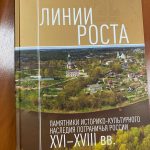Working meeting “Zasechnaya lines in the history and culture of the peoples of Russia”
On October 18, 2023, Bolgar hosted a working meeting “Zasechnaya lines in the history and culture of the peoples of Russia”. Topical problems of historical and archaeological study of the zasechnaya lines, issues of their preservation and popularization, as well as investigations within the project implementation in Western and Eastern Siberia and the Far East were considered there.
The meeting is organized by the Republican fund of Cultural and Historical Monuments Revival, the Institute of Archaeology named after A.Kh. Khalikov of the Tatarstan Academy of Sciences, Kazan (Volga Region) Federal University and the Bolgar Historical and Architectural Museum-Reserve. The event is supported by the Russian Historical Society and the Fund “History of the Fatherland”
In 2020, on the errand from the President of the Russian Federation, work was organized to identify cultural heritage objects associated with the Belgorod zasechnaya line, their state protection, scientific study and further use for the development of educational tourism, as well as to organize a tourist route along the sites of the Belgorod zasechnaya line. In 2021 the project was used on the territory of the European part of Russia, and in 2022 – on the territory of Trans-Urals, Siberia and the Far East. The project preparation was coordinated by the Institute of Archaeology named after A.Kh. Khalikov of the Tatarstan Academy of Sciences. The research results of the European part of Russia were presented to the public in the summer of 2022 in the form of the book “Lines of Growth. Monuments of the Historical and Cultural Heritage of the Borderlands of Russia in the 16th–18th Centuries”, prepared by specialists of the Russian Historical Society, the Institute of Archaeology of the Russian Academy of Sciences, the Federal Archival Agency, Kazan Federal University and the Institute of Archaeology named after A.Kh. Khalikov of the Tatarstan Academy of Sciences.
The meeting discussion was attended by 52 people, including both scientists and scientific and educational institutions of Magadan, Novosibirsk, Lipetsk regions, Republic of Tatarstan, cultural institutions of Tula region and Republic of Tatarstan, representatives of regional and municipal authorities of Samara region, Alkeyevo, Alekseyevskoye, Almetyevsk, Buinsk, Leninogorsk, Menzelinsk, Novosheshminsk, Sarmanovo, Spassk, Cheremshan, Chistopol districts of the Republic of Tatarstan, as well as representatives of the Republican fund of Cultural and Historical Monuments Revival, the Russian Historical Society and the Fund “History of the Fatherland”.
The meeting heard the reports of Doctor of History, Professor, director of the Institute of Archaeology named after A.Kh. Khalikov of the Tatarstan Academy of Sciences Sitdikov Ayrat Gabitovich ” Wooden fortresses and defensive lines of Siberia: topical issues of study”; Candidate of History, scientific secretary of the State Museum-Reserve “Kulikovo Field” Vorontsov Aleksey Mikhailovich, Candidate of History, head of the Department of archaeological studies of the State Museum-Reserve “Kulikovo Field” Stolyarov Yevgeny Vasilyevich “New studies of the fortifications of the Tula zasechnaya line”; Doctor of History, Associate Professor, leading research fellow at the Institute of Archaeology and Ethnography SB RAS Borodovskiy Andrey Pavlovich “Archaeological survey of the site of the Irtysh defensive line of the XVIII century (Cherlak district, Omsk region)”; Candidate of History, research fellow at Novosibirsk State University Gorokhov Sergey Valeryevich “Public online catalog of wooden fortifications of the Russian state in Siberia and the Far East at the end of the XVI – beginning of the XVIII centuries”; the head of the Cheremshan district of the Republic of Tatarstan Aybatov Ramil Talgatovich “Cheremshan fortress”.
Following the results of the meeting, the intermediate results of the project of historical and archaeological study of the zasechnaya and defensive lines of the Russian borderlands in the XVI-XVIII centuries were summarized, the importance of studying the monuments of historical and cultural heritage of the Russian borderlands and their popularization, first of all, among the local population was noted.






